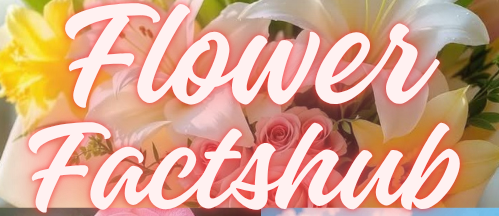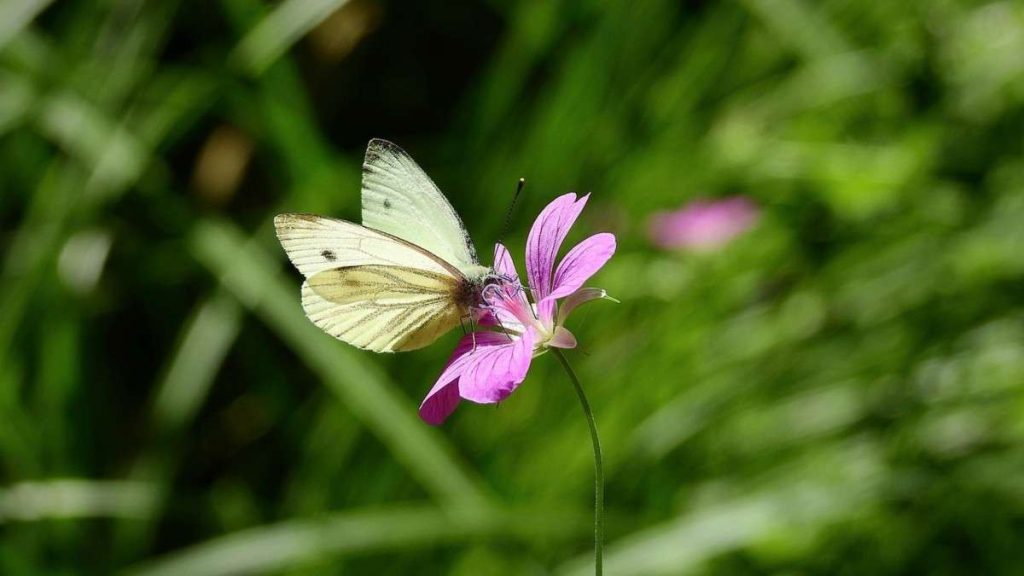Uma Flowers have an incredible way of bringing joy, color, and vibrancy to any space. Whether in your garden, on your windowsill, or as part of a bouquet, flowers transform an area with their beauty and fragrance. But today, let’s talk about a particular flower that’s been catching the attention of gardeners everywhere. If you haven’t heard of them yet, don’t worry; you’re about to be introduced to one of the most delightful plants you can grow!
Uma Flower is a relatively new addition to many gardens, offering stunning colors, aromatic fragrance, and easy care. Whether you’re a seasoned gardener or a novice, these flowers are a perfect choice for adding a burst of beauty with minimal maintenance. In this comprehensive blog post, we’ll dive into what Uma Flowers are, how to grow and care for them, tips for maintaining their health, and everything else you need to know to make these flowers thrive in your space.
What Are Uma Flowers?
Before we delve into the how-to’s of growing Uma Flowers, let’s start by understanding what makes them so special. Uma Flowers are a genus of flowering plants that belong to the family Umaaceae. Their native habitat is typically tropical and subtropical regions, making them ideal for growing in warmer climates. However, with the right care, these flowers can also flourish in temperate zones.
These flowers are known for their:
- Rich, Colorful Blooms: Uma Flowers produce vibrant, multi-colored petals that are perfect for brightening any garden. The variety in color ranging from reds and yellows to purples and blues—makes them an eye-catching addition to any outdoor space.
- Sweet, Fragrant Aroma: Uma Flowers have a natural, pleasant fragrance that will fill your garden with a delightful scent, attracting bees, butterflies, and other pollinators to your space.
- Low-Maintenance Nature: One of the main reasons people love Uma Flowers is how easy they are to care for. They’re relatively resistant to pests and diseases, making them perfect for gardeners who want beauty without the constant upkeep.
- Long Bloom Period: These flowers bloom for a long time, often starting in spring and continuing into the fall, providing long-lasting color throughout the growing season.
Why You Should Add Uma Flowers to Your Garden
If you’re considering new plants for your garden, Uma Flowers are a great choice. Here’s why:
1. Perfect for Beginners and Experienced Gardeners Alike
Uma Flower is relatively easy to grow and maintain, making them ideal for novice gardeners. Whether you’re just starting or have been gardening for years, these flowers can adapt to a variety of environments and conditions. Their low-maintenance nature makes them great for anyone looking to create a beautiful garden with minimal effort.
2. Attracts Pollinators
Pollinators, like bees and butterflies, are essential to the health of your garden. The fragrance and color of Uma Flowers naturally attract these creatures, helping pollinate not just the Uma Flowers but also the other plants in your garden. This will encourage healthy growth and increase your garden’s biodiversity.
3. Aesthetic Appeal
Uma Flowers have a unique visual appeal that stands out in gardens, both as stand-alone plants and when grouped in clusters. Whether you’re looking to create an elegant, minimalist garden or a bold, colorful display, Uma Flowers are versatile enough to fit any garden style.
4. Long-Lasting Beauty
Uma Flowers bloom for an extended period, making them a great option for gardeners looking for consistent color throughout the growing season. With proper care, they’ll bloom from spring into fall, offering a visual treat for several months.
How to Grow Uma Flowers
Now that we’ve covered the basics, let’s dive into how to successfully grow Uma Flowers in your garden. While these flowers are easy to care for, there are still some key factors to keep in mind to ensure they thrive.
1. Choosing the Right Location
Uma Flowers prefer full sun, so choose a location that receives at least 6 hours of direct sunlight per day. They can tolerate partial shade, but to get the most vibrant blooms and robust growth, aim for a sunny spot. The soil should be well-draining to avoid waterlogging, which can lead to root rot.
2. Soil Requirements
While Uma Flowers are fairly adaptable when it comes to soil, they do best in rich, loamy, well-draining soil. Ideally, you’ll want to plant them in soil that is slightly acidic to neutral (pH between 6.0 and 7.0).
If you’re planting in a garden bed, you can improve the soil’s quality by adding compost or organic matter. This will enrich the soil and help maintain moisture, which is crucial for healthy Uma Flower growth.
For container planting, use a high-quality potting mix designed for flowering plants. Ensure the container has drainage holes to prevent water from accumulating at the bottom, which could cause root rot.
3. Watering
Uma Flowers like consistently moist soil, but they don’t like to sit in water. The key is to keep the soil moist without making it soggy. Water deeply, but less frequently, allowing the top layer of soil to dry out slightly between watering sessions.
During hotter months, especially in summer, you may need to water more often. However, always check the moisture level of the soil first. If the soil feels wet to the touch, it’s best to wait a day or two before watering again.
4. Fertilization
Uma Flowers are fairly forgiving when it comes to fertilization, but feeding them will encourage healthier growth and more vibrant blooms. A slow-release, balanced fertilizer applied in early spring is ideal for providing essential nutrients as the plants begin their growing season.
For best results, reapply the fertilizer every 4–6 weeks during the growing season. Be sure to follow the manufacturer’s instructions on the fertilizer packaging, as over-fertilizing can lead to weak growth or even harm the plants.
5. Pruning and Deadheading
Deadheading, or removing spent flowers, is an essential task for keeping your Uma Flowers looking tidy and encouraging more blooms. Regularly trim off the faded flowers to promote new growth and extend the blooming period.
Additionally, at the end of the growing season (usually late fall), prune back the plants to remove any dead or damaged foliage. This will help the plant conserve energy for the next year and keep it looking healthy.
6. Mulching
A layer of mulch around the base of the Uma Flowers will help maintain soil moisture, suppress weed growth, and keep the roots cool during the hot months. Apply a thin layer (about 2–3 inches) of organic mulch, such as wood chips or shredded leaves.
Common Pests and Diseases to Watch Out For
While Uma Flowers are relatively resistant to pests and diseases, they aren’t completely immune. Here are a few things to keep an eye on:
1. Aphids
Aphids are small, sap-sucking insects that can damage the leaves and stems of Uma Flowers. If you notice tiny green, yellow, or black bugs on your plants, you might be dealing with aphids. To get rid of them, gently spray the affected areas with a mixture of water and mild soap or neem oil.
2. Slugs and Snails
These slimy pests love to munch on the tender leaves of Uma Flowers, especially at night. Place copper tape around your plants or use natural slug and snail repellents to keep them away.
3. Powdery Mildew
Powdery mildew is a fungal disease that affects many plants, including Uma Flower. It appears as white, powdery spots on the leaves and stems. To prevent powdery mildew, ensure good air circulation around your plants and avoid overhead watering. If you spot mildew, remove the affected leaves and treat the plant with a fungicide.
How to Propagate Uma Flowers
Uma Flower can be propagated through seeds or cuttings. Here’s how you can do both:
1. Growing from Seeds
Start by collecting seeds from your Uma Flower once they’ve dried out. Plant the seeds in a seed tray or small pots filled with well-draining soil. Keep the soil moist and place the containers in a warm, sunny spot. Seeds will usually germinate within a few weeks, and you can transplant the seedlings into the garden once they have a few sets of leaves.
2. Growing from Cuttings
Take cuttings from healthy, mature plants in the spring or early summer. Ensure the cutting is at least 4–6 inches long, with a healthy stem and a few sets of leaves. Dip the cut end of the stem into rooting hormone and plant it in a pot filled with potting mix. Keep the cutting in a warm, shaded spot, and mist the leaves occasionally to keep the humidity up. After a few weeks, the cutting should develop roots, and you can transplant it into the garden.
Companion Plants for Uma Flowers
To create a harmonious garden, consider planting Uma Flowers alongside other plants that complement their beauty and care requirements. Here are a few good companions for Uma Flowers:
- Lavender: Lavender’s fragrance pairs well with the sweet scent of Uma Flower. It also shares similar sun and water requirements, making it an excellent companion.
- Petunias: These colorful flowers complement the vibrant hues of Uma Flower and will attract even more pollinators to your garden.
- Coreopsis: Coreopsis offers a burst of yellow color that contrasts beautifully with the bold blooms of Uma Flowers.
Final Thoughts
Uma Flowers are an excellent addition to any garden, whether you’re looking for a splash of color, a fragrant focal point, or an easy-to-care-for plant that attracts pollinators. With a bit of attention to soil, sunlight, and watering, these stunning blooms will reward you with a long season of beauty.
By following the tips and advice outlined above, you can ensure your Uma Flowers will thrive and brighten your garden year after year. So, what are you waiting for? It’s time to plant some Uma Flower-based and watch your garden flourish!
Frequently Asked Questions (FAQs)
Q1: What is Uma Flowers?
Uma Flowers is typically a brand or boutique floral shop known for offering fresh, artistic, and eco-friendly floral arrangements that highlight nature’s beauty and charm.
Q2: What types of flowers does Uma Flowers offer?
Uma Flowers offers a wide range of blooms, including roses, lilies, tulips, orchids, sunflowers, carnations, and seasonal or exotic varieties, depending on availability.
Q3: Are the flowers at Uma Flowers locally sourced?
Many shops like Uma Flowers prioritize locally grown and sustainably sourced flowers, though availability may vary by location and season.
Q4: Does Uma Flowers offer delivery services?
Yes, most floral boutiques including Uma Flowers offer same-day or scheduled delivery for local areas, with options for custom notes and packaging.
Q5: Can I customize my floral arrangement?
Absolutely! Uma Flowers often allows customers to personalize arrangements by selecting favorite blooms, colors, and styles for any occasion.



